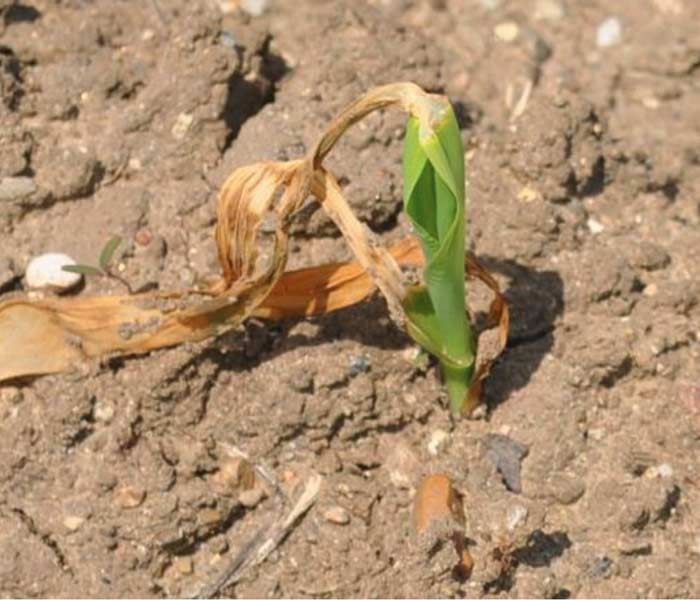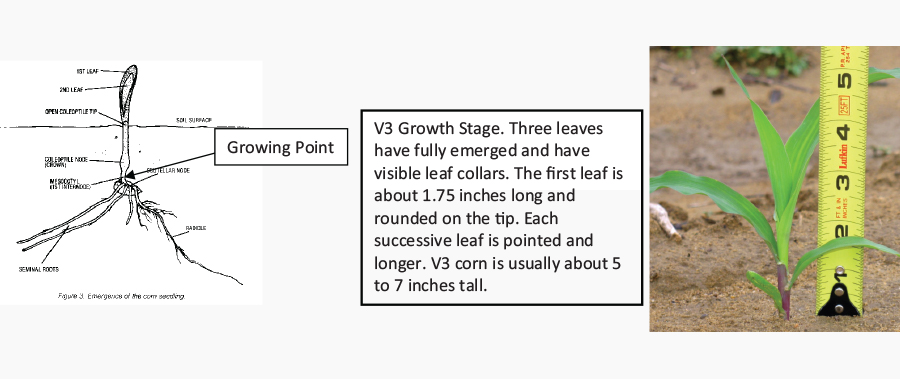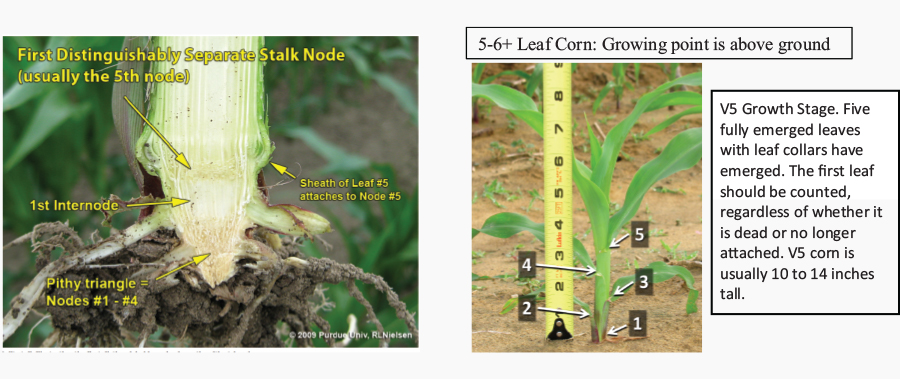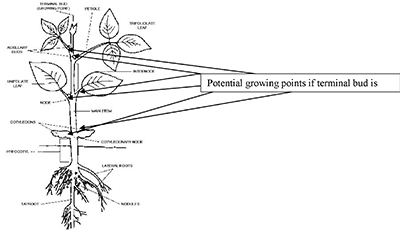Premier Co-op

December Energy News
I hope you were able to enjoy Thanksgiving with family and friends. And I hope you’ve recovered from your food coma. For the 10 of you (including my mom) who read my newslett...

 At about the 5-leaf stage of growth, the growing point is at the soil surface and will be above ground with further growth. The growing point is in the center of the developing above ground stalk and is protected somewhat from freezing conditions; however, there is a greater risk of significant damage compared to earlier growth stages. Look for any discolorations to indicate damage or stress.
At about the 5-leaf stage of growth, the growing point is at the soil surface and will be above ground with further growth. The growing point is in the center of the developing above ground stalk and is protected somewhat from freezing conditions; however, there is a greater risk of significant damage compared to earlier growth stages. Look for any discolorations to indicate damage or stress.
 To assess the damage to young corn seedlings, dig up a number of plants and carefully dissect them to expose the growing point. On 4-leaf corn, the growing point will generally be 0.5-1” below the soil surface. If the growing point is firm and not a discolored gray, tan or brown, normal growth will occur as the weather warms up. A water-soaked, discolored growing point indicates that the growing point is injured and probably dead. Too often growers jump the gun and replant when all that was actually damaged was some leaf tissue resulting in cosmetic damage, but no real yield or stand reductions.
To assess the damage to young corn seedlings, dig up a number of plants and carefully dissect them to expose the growing point. On 4-leaf corn, the growing point will generally be 0.5-1” below the soil surface. If the growing point is firm and not a discolored gray, tan or brown, normal growth will occur as the weather warms up. A water-soaked, discolored growing point indicates that the growing point is injured and probably dead. Too often growers jump the gun and replant when all that was actually damaged was some leaf tissue resulting in cosmetic damage, but no real yield or stand reductions.
 Unlike corn, the growing point on soybean seedlings is above ground from emergence on. Soybeans can actually withstand temperatures lower than corn without significant damage; however, the growing point is exposed making them more susceptible to freezing temperatures. All of the leaf tissue on soybeans may be injured and turn black or brown and the soybean plant can still recover. There are axillary buds located at the attachment area of the cotyledons, unifoliate and trifoliate leaves that can develop if the leaves and terminal growing point are damaged. As long as these axillary buds are not damage by the frost, the plant can recover.
Unlike corn, the growing point on soybean seedlings is above ground from emergence on. Soybeans can actually withstand temperatures lower than corn without significant damage; however, the growing point is exposed making them more susceptible to freezing temperatures. All of the leaf tissue on soybeans may be injured and turn black or brown and the soybean plant can still recover. There are axillary buds located at the attachment area of the cotyledons, unifoliate and trifoliate leaves that can develop if the leaves and terminal growing point are damaged. As long as these axillary buds are not damage by the frost, the plant can recover.
To assess the extent of damage to soybeans caused by freezing conditions, you need to examine the plants to see if just the leaf tissue is affected or whether the axillary buds have also been damaged. Axillary buds located at each node need to be examined. If the buds are dark green or black, the plant is probably dead. Again, like in corn, don’t be too hasty in making a replant decision. Give it several days to determine what percent of the actual stand is affected. Soybeans can compensate very well for stand reductions early in the season.
Contact your local Premier agronomist if you have any questions on assessing your crops for frost damage.
